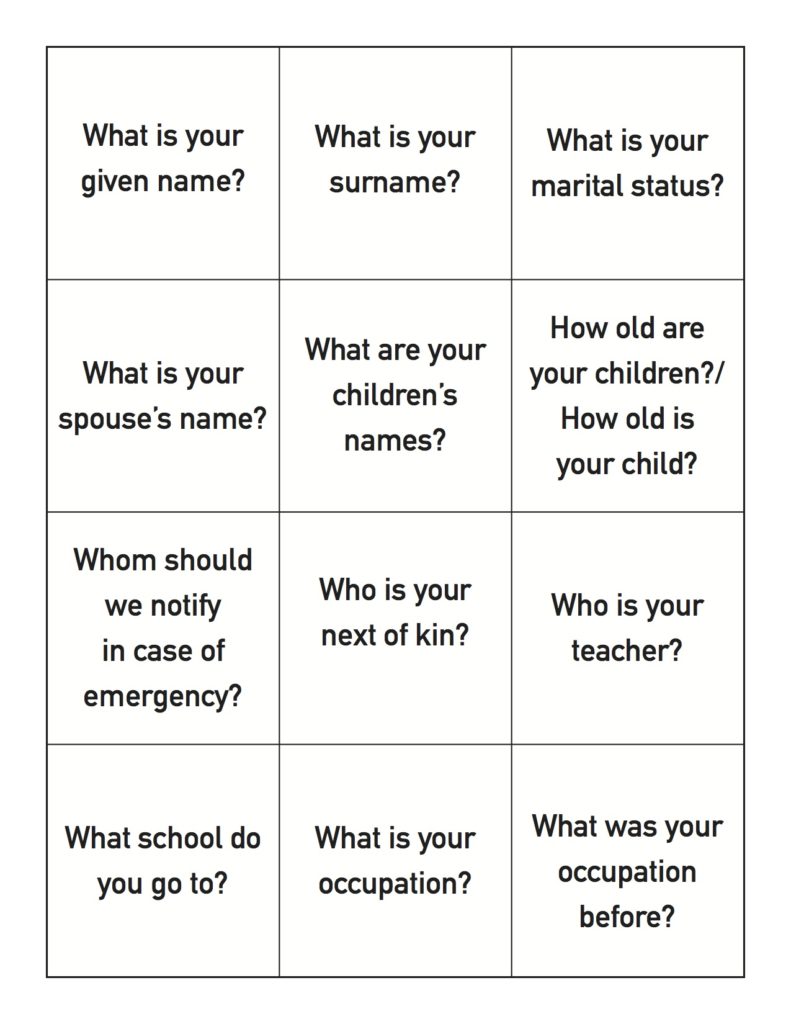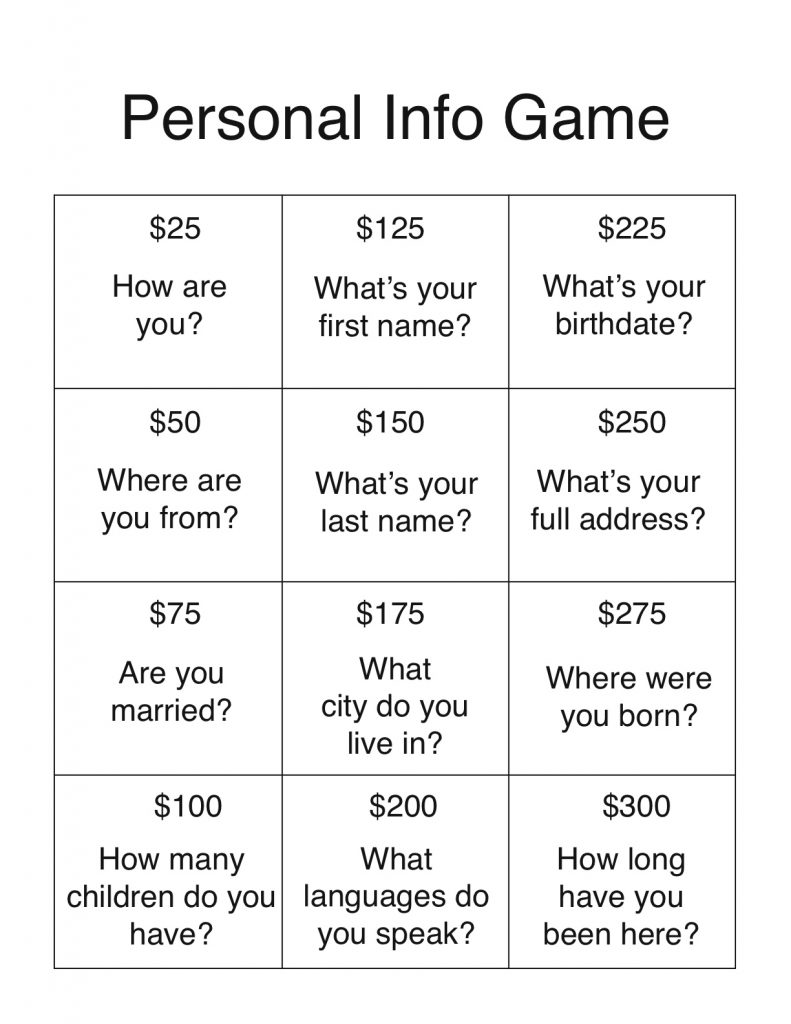Filling in forms is one of the most common activities English language learning students have to do outside the classroom. It’s a mistake to assume once students reach the intermediate level they have fully mastered the language required for those tasks.
Many of us like to start a new class with getting to know you activities. Here below is a worksheet students can complete in class or for homework. Click on the image below to download it for use in your own classroom. It is followed by a set of cards you can cut up and use for a mixer activity on the following day.

Click on the image below to download your own copy.

Photocopy onto card stock. Cut the sheet into cards. Give one card to each student. Ask students to congregate in the middle of the classroom. Put on some music. Students mingle around the room when the music is on. Stop the music randomly. When the music stops, each student must find the person closest and ask the question on his or her card. The other student answers and then asks the question on his or her card. Start the music again when it looks as though most, though perhaps not all, students have answered. Students must then swap cards and begin moving around. Repeat until everyone appears to have had a chance to talk with everyone else in the class and answer each question.



